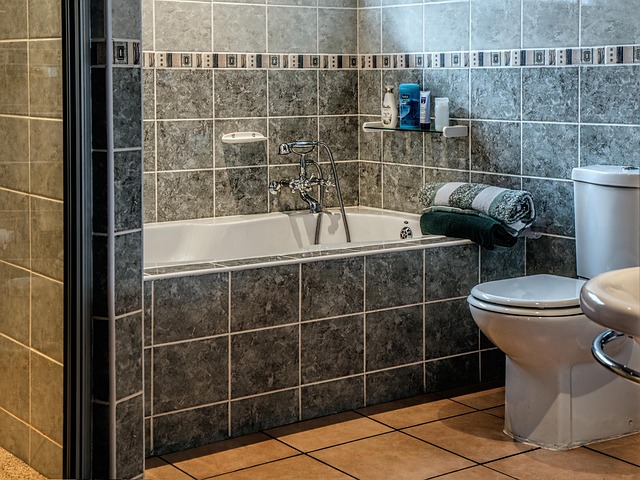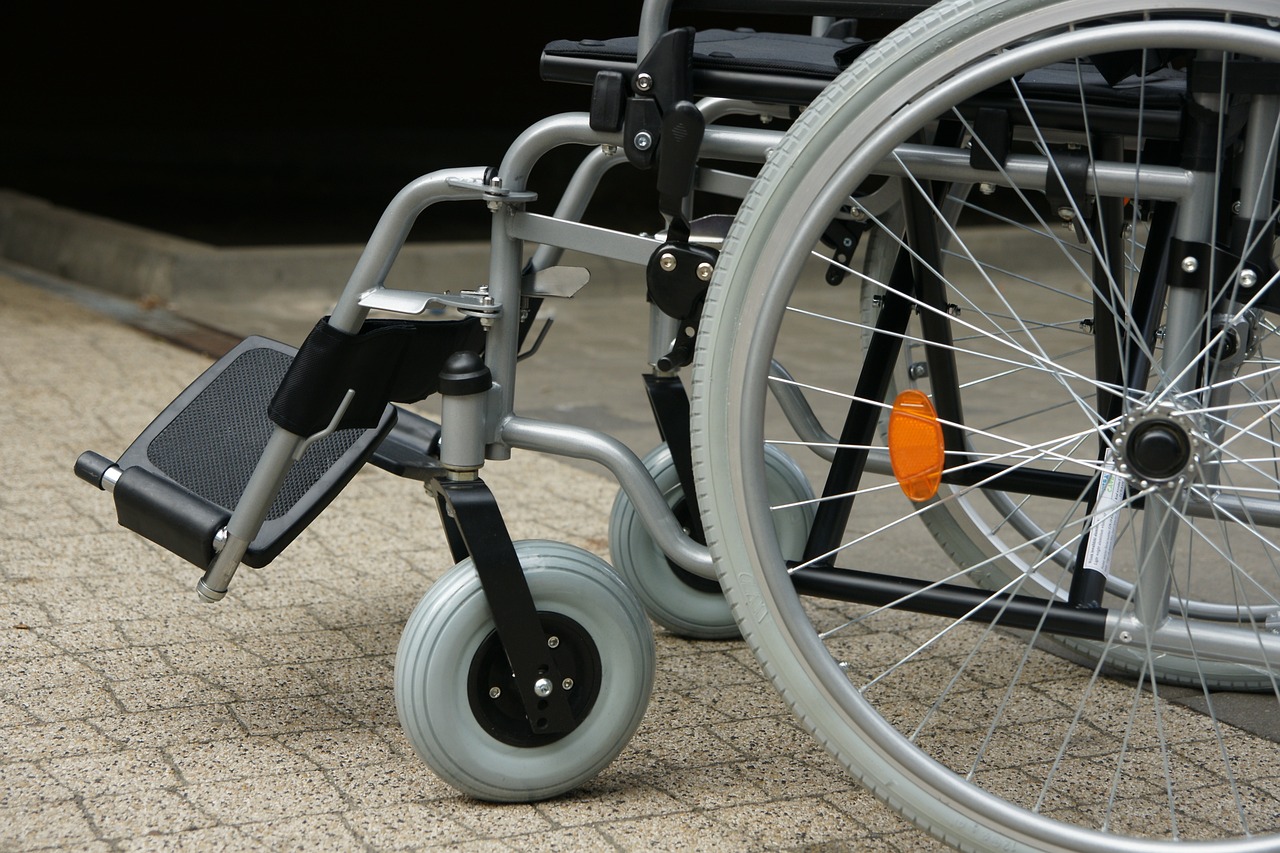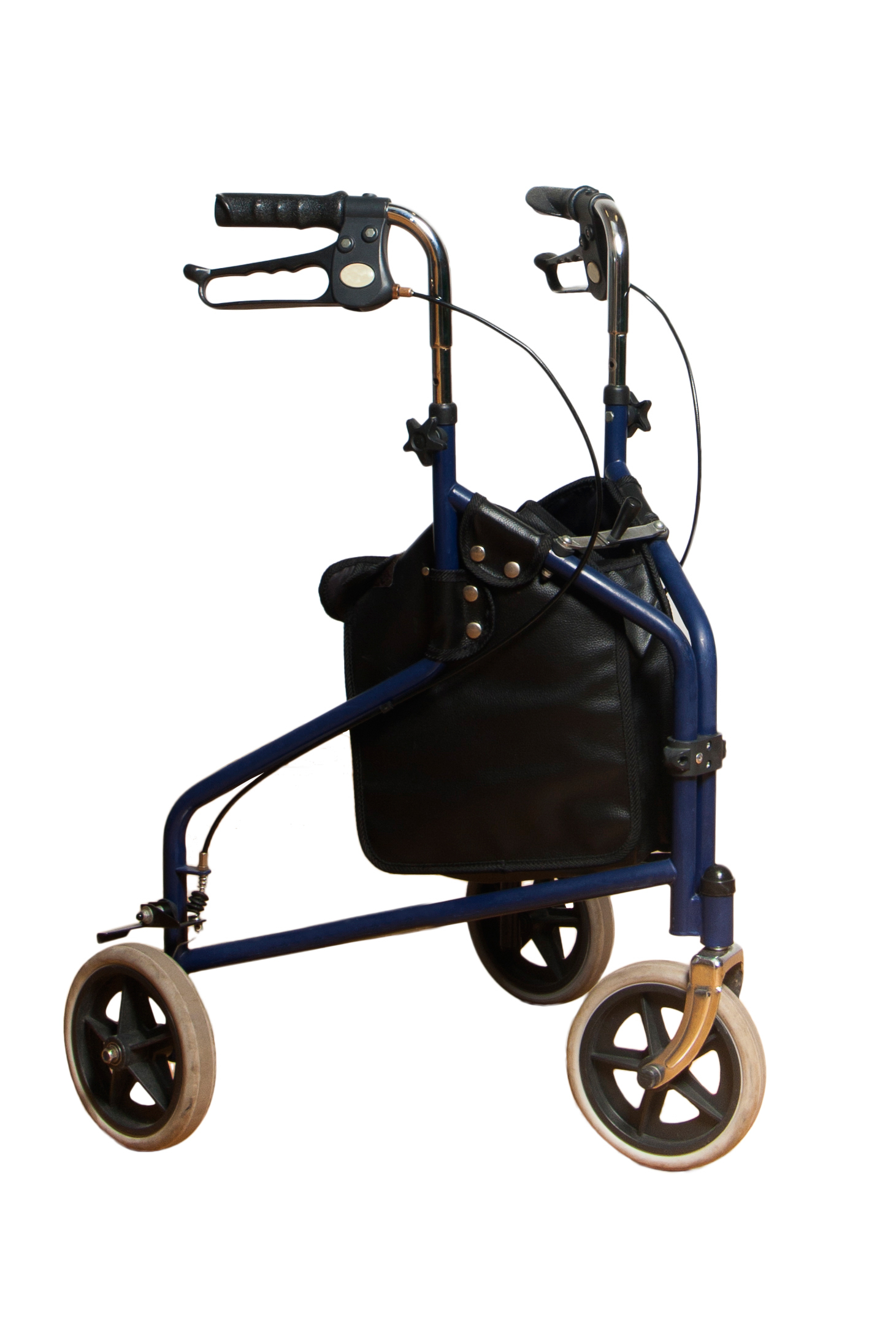Rolling and standard walkers are two of the most commonly used assistive devices by seniors.
Both styles are designed to make folks safer while standing and walking, but that doesn’t mean they should be used interchangeably.
Yup, the simple addition of a pair of front wheels makes a pretty big difference.
When trying to decide between a rolling or standard walker, it really boils down to whether you need more stability or more mobility.
If stability is the primary necessity, a standard walker might be the better choice; if you’re looking for more mobility, you may be better off with a rolling walker.
But I’m getting a little ahead of myself.
In this guide, we’ll go over the key differences between standard and rolling walkers, as well as which device is best suited for different situations.
After reading, you’ll be ready to choose the right walker for your needs.
Rolling vs Standard Walkers
First things first though, we need to make sure we’re all talking about the same things here.
After all, there are several kinds of walkers out there and they come in all kinds of shapes and sizes.
And when it comes to mobility aids, rolling walkers and standard walkers both play vital roles.
Each serves a unique purpose and can greatly enhance the quality of life for those in need, but knowing the differences can help decide which one might be more suitable.
Rolling Walkers
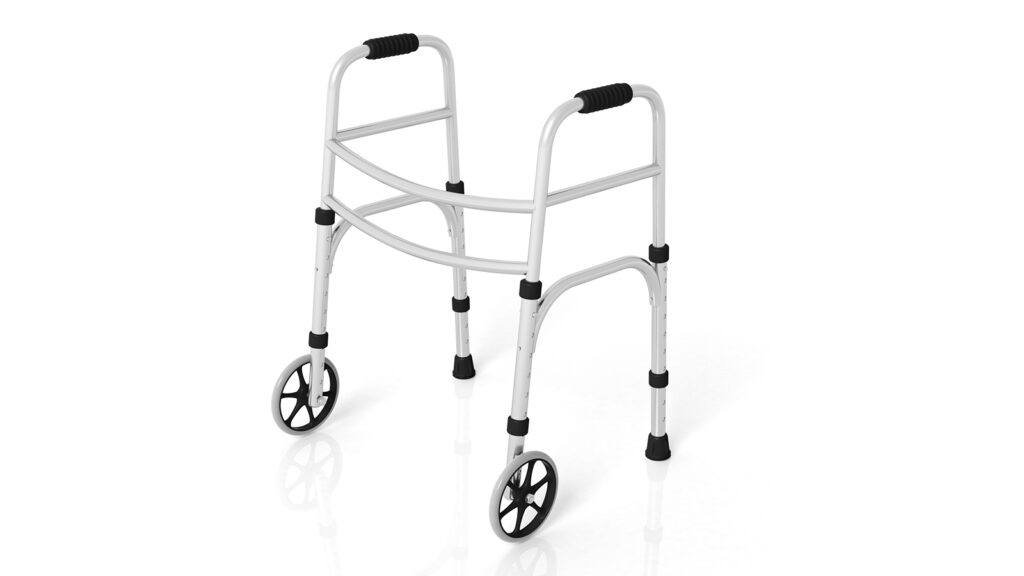
The term “rolling walker” infers that the walker has wheels, which is true, but there are more than one kind of walker that has wheels.
Traditionally (and for the sake of this article), when I say “rolling walker”, I’m really referring to a front wheel walker (FWW).
Front wheel walkers consist of a lightweight metal frame (usually aluminum) and come with 2 wheels in the front and 2 legs in the back.
This is different than a rollator, which comes with 4 large wheels, brakes, and a seat.
Rollators offer even more mobility and are great for going outside because the larger wheels can handle rougher terrains and the built-in seat makes for convenient rest breaks.
FYI, if you’re not sure if you’d be better off with a rolling walker or a rollator, check out my full article on the topic for more info.
But again, here, we’re talking about front wheel walkers (only 2 wheels).
With their 2 front wheels, FWWs move more fluidly and allow quicker navigation over smooth surfaces.
This means you can glide these walkers along the floor when walking, instead of having to pick ’em up and place ’em down with each step.
Rolling walkers are ideal for those who need moderate help and want to move swiftly and comfortably.
These walkers are excellent for indoor use, but can also be used outside on smooth, paved surfaces when necessary.
Standard Walkers
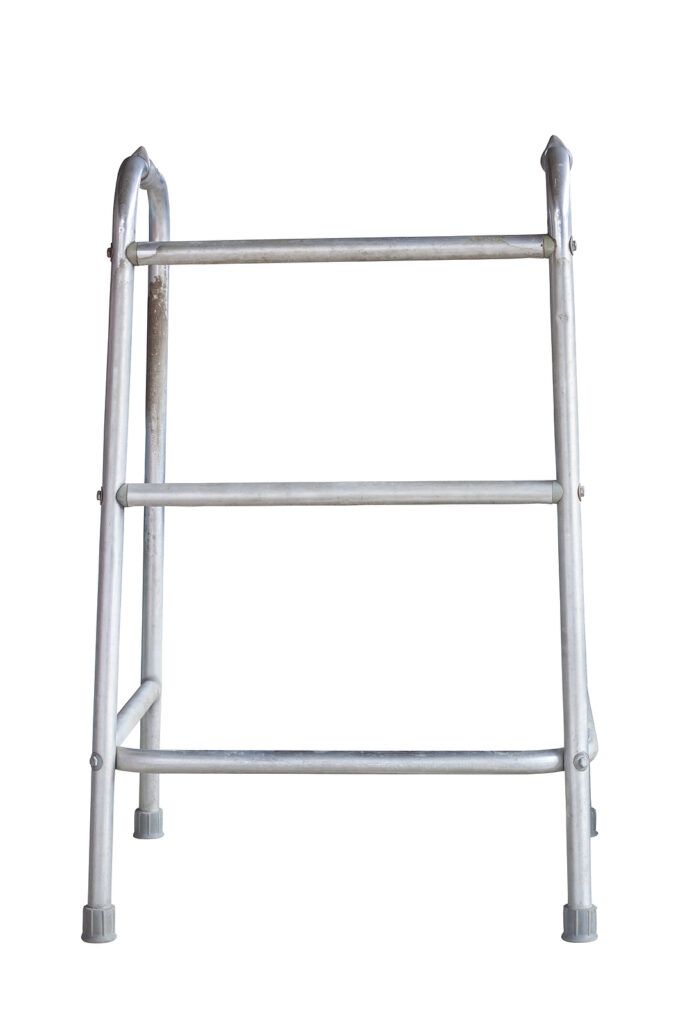
On the other hand, standard walkers have no wheels at all.
They are more basic in design with four sturdy legs that provide excellent stability.
Since they have no wheels, seniors have to lift and place the walker as they move, which offers a higher level of support.
But as you can imagine, it significantly slows you down.
Standard walkers are great for individuals who need maximum assistance with their gait and balance.
They also work well in cases where you are limited in the amount of weight you can put through one of your legs, whether due to surgery or a healing injury.
Not having to worry about the standard walker rolling on ya allows you to put more weight through it safely.
They excel in providing stability, but they require a little more energy to use.
Overall, standard walkers shine in situations requiring significant stability, making them perfect for those who need substantial support when moving.
They are typically used indoors in smaller, controlled spaces like homes or rehabilitation centers. Since they lack wheels, they are less likely to slip, reducing the risk of falls.
Pros and Cons: Rolling Walkers vs. Standard Walkers
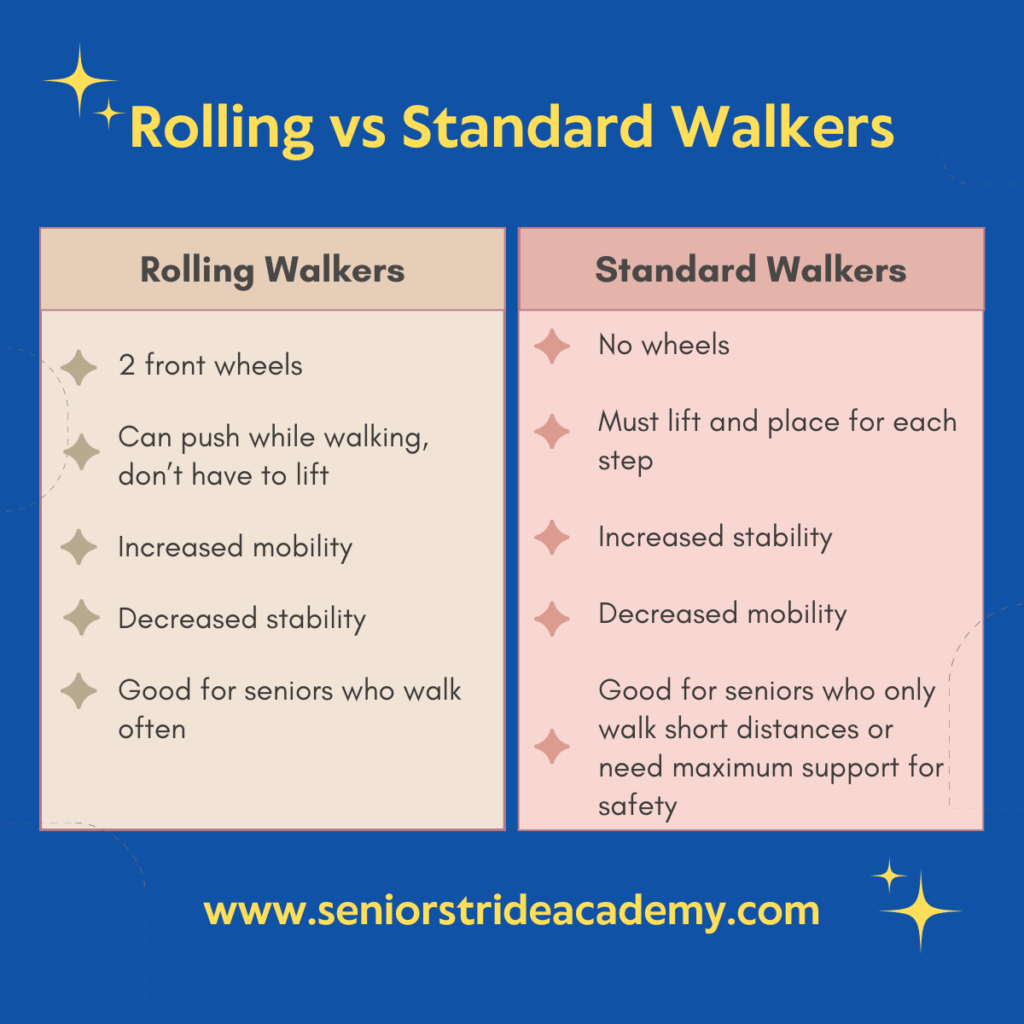
Rolling walkers, with their 2 front wheels, come with one major advantage – their ease of mobility.
The wheels allow for smoother and quicker movements, reducing the physical effort needed. This can be a game-changer for individuals who have some strength and flexibility but still require some support.
Not having to lift the walker for each step allows for faster gait speeds and more normalized walking patterns.
However, rolling walkers also have downsides.
They can be less stable, especially when putting more weight through your arms.
If you have weight bearing precautions or pain that makes walking difficult, you might prefer a slower, more stable assistive device.
In contrast, standard walkers provide maximum stability, being a solid choice for those needing substantial support.
The lack of wheels ensures a stable grip on the ground, significantly reducing the risk of slipping.
This makes them suitable for individuals with severe balance issues or coordination problems, as well as seniors that aren’t allowed to put weight through one of their legs.
But with standard walkers, maneuverability is limited.
Users have to lift and move the walker with each step, which can be tiring over time. This can make them less ideal for longer distances or outdoor use.
Without wheels, these walkers can also slow down the user, potentially hindering quicker movements and altering normal gait patterns.
Choosing the Right Walker: Mobility vs Stability
Choosing between a rolling walker and a standard walker often comes down to specific needs and lifestyle factors:
- If mobility and convenience are the priority, and the user has the balance to manage it, a rolling walker might be the better choice.
- If stability and support are more critical, especially for indoor use, a standard walker might be more appropriate.
Weighing these pros and cons can help make a more informed decision.
In terms of cost and space requirements, there aren’t any big differences between standard and rolling walkers.
Both walker styles are about the same size and cost about the same, so these factors shouldn’t really play a part in the decision making process.
Helpful tip: if you already have a standard walker and would prefer a rolling walker, you can purchase the wheels separately (~$15) and easily attach them yourselves.
And when in doubt, please consult your family physician or request a physical therapy consult – these healthcare professionals will be able to lead you in the right direction.
Final Thoughts
Well, I think that about does it.
Standard walkers and rolling walkers are very similar, but it’s amazing how much difference the addition of 2 front wheels makes.
As mentioned earlier, rolling walkers are more mobile, making them a lot more convenient to use for most seniors, but they give up a little in the stability department.
But that doesn’t mean rolling walkers are unstable or anything like that – it’s really only in comparison to standard walkers.
And from my experience, most folks are better off with a rolling walker.
If you’re ambulatory and walking on a regular basis, you will likely find a rolling walker easier to use because they don’t inhibit normal walking patterns.
They simply provide a little handhold assistance while moving around.
That said, if your walking ability is significantly limited or you feel very unstable on your feet with standing, you may be better off with a standard walker.
Standard walkers are harder to move, so they provide a firmer surface to hold onto and put weight through.
Anyway, I hope you found this article helpful and as always, if you have any questions or comments just leave ’em below and I’ll get back to you shortly.

